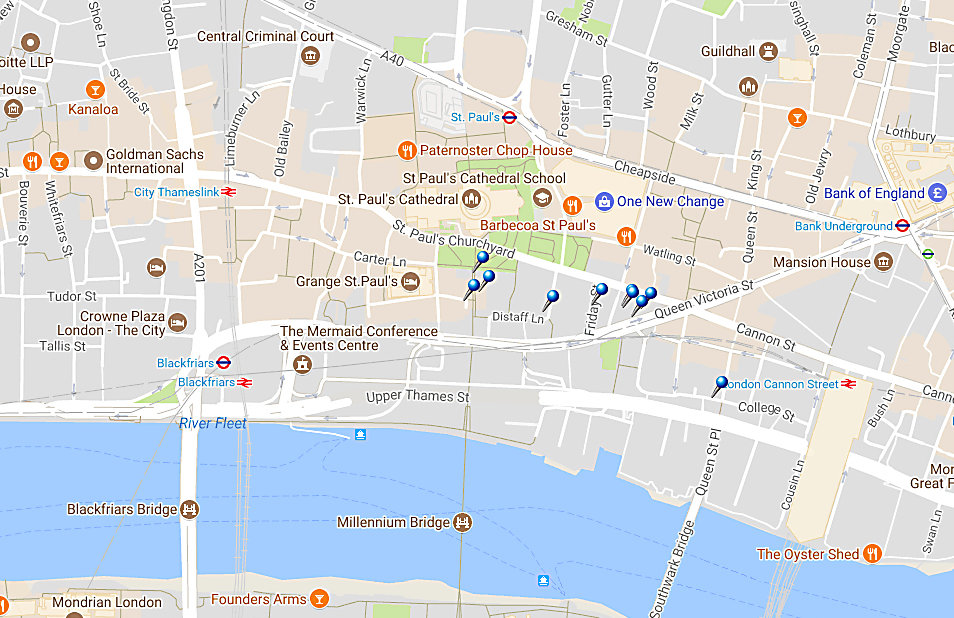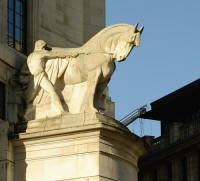 |
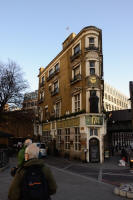 |
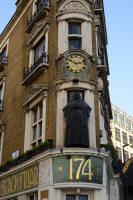
Blackfriar PH |
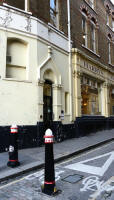 |
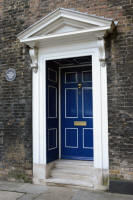 |
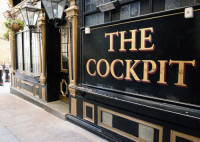 |
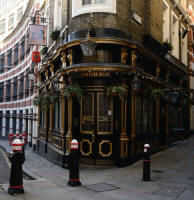
St Andrews Hill |
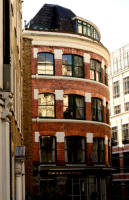
Good reflections |
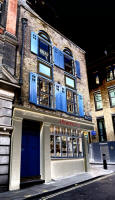 |
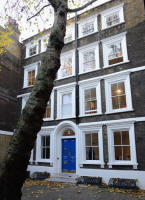
Wardrobe Place |
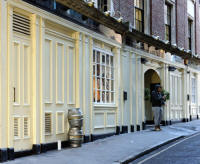
"The Centre Page" corner Peters Hill |
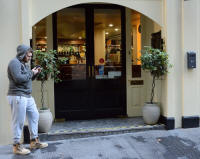 |
|
We visited Wardrobe Place and I took the same picture at:
http://www.catfan.co.uk/1.Catfan_around-stPauls.htm |
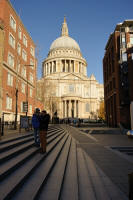
St Paul's
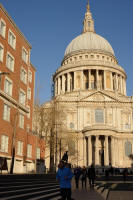 |
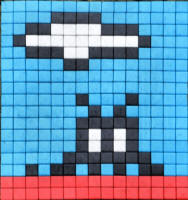 |
Invader is the pseudonym of a French
urban artist, born in 1969, who pastes
characters from and inspired by the 1978 arcade game Space Invaders,
that are composed of small coloured square tiles forming a space invader
character mural mosaic.
On our last visit this mosaic was in place;
someone has since taken it down or pinched it... |
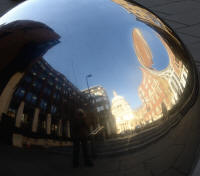
On Peters Hill |
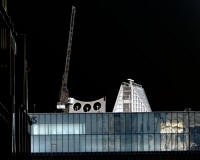
My favourite 'The Razor' or Strata SE1 peeping over |
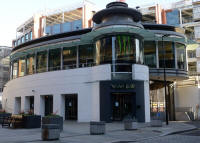
Vinyl Bar |
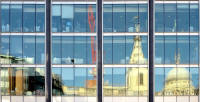
Good reflections |
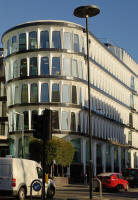 |
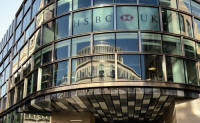
More reflections - An HSBC Office |
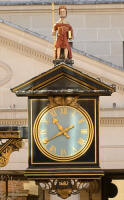
Dwarf on a clock |
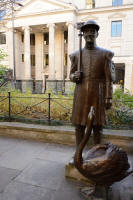
The Barge Master and Swan Marker by by Vivien Mallock |
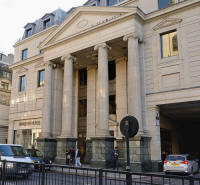
Trinity Hall |
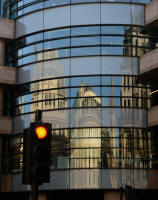
Reflections |
We waited in Vintners' Hall for the tour to start. There was
an excellent loo down some handsome stairs |
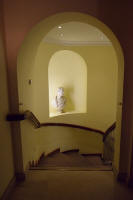 |
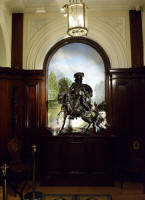
St Martin of Tours |
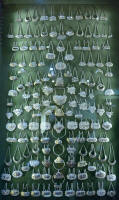
This enlarges enough to read the labels |
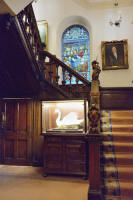
The Five Kings stained glass & the main stairs |
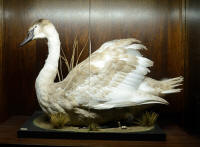
A cygnet which comes out on ceremonial occasions |
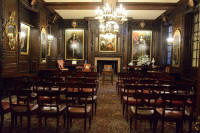
Main pictures William III and Mary II in the
Court room |
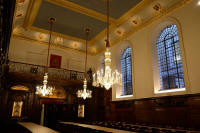
The Dining Hall |
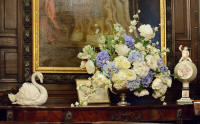
Swan detail below
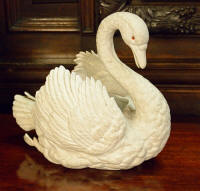 |
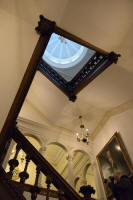
With Steve |
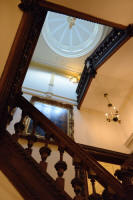 |
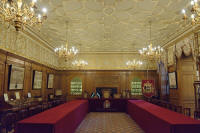
The Drawing Room |
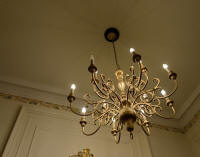 |
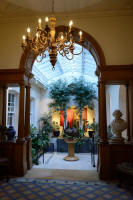 |
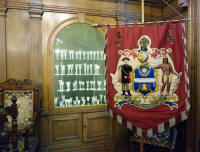
Distillers Company banner |
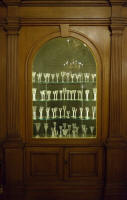 |
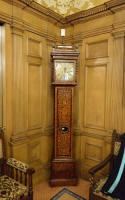 |
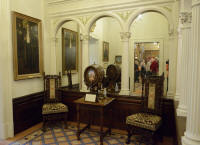 |
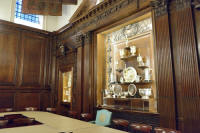
Claret the cat slept in the Silver Case and caused
mayhem at a dinner when scared by pipers |
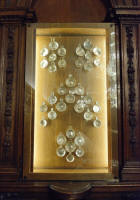
French wine tasters |
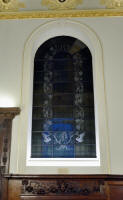 |
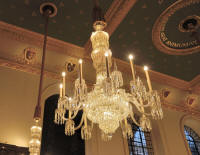
Livery Hall of the Worshipful Company of Vintners |
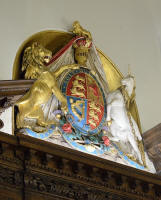 |
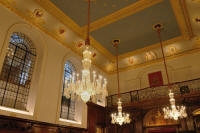
Livery Hall |
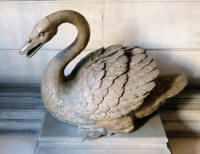 |
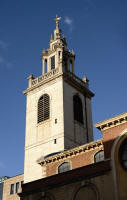 |
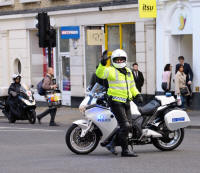 |

Traffic halted to let this Bentley through |
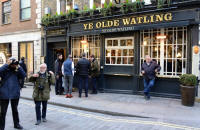 We had lunch at Ye Olde Watling
- a Nicholson PH |
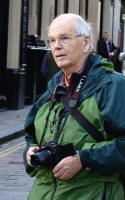 |
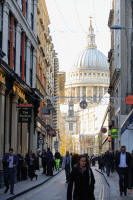
Pastel St Paul's |
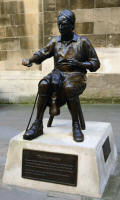
A cordwainer was a shoemaker who made shoes from new
leather from Cordoba in Spain.
The leather was particularly prized thanks to a process that softened
the hides using alum from a secret method imported from Africa by the
Moors. Cobbler's were restricted to repairing shoes.
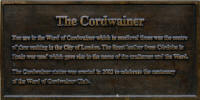 |
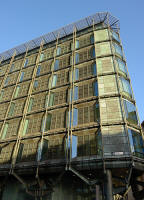
HSBC HQ, looks like a prison... |
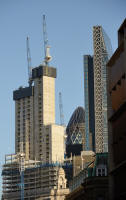 |
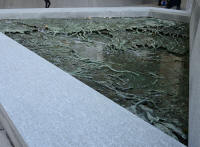
"Forgotten Streams" a representation of the River
Walbrook which has become an underground sewer 
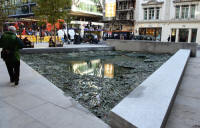
Crossed ladders? No building's reflection
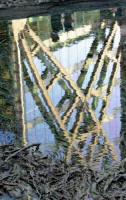 |
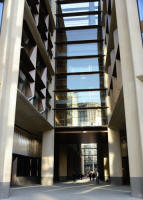
Bloomberg Arcade |

Reflections |
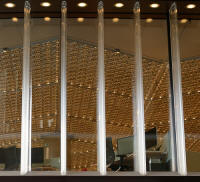
Office |
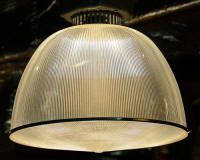
Lampshade |
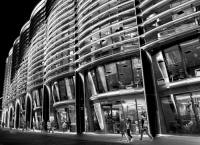 |
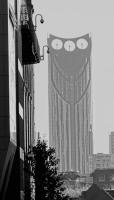
A ghostly Razor or Strata SE1 |
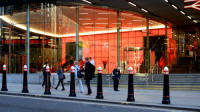
Cannon St Station |
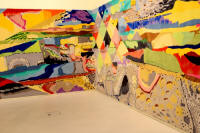
Mural at the Mithraeum |
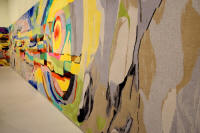 The Exhibition Space in the
Mithraeum on Walbrook
|
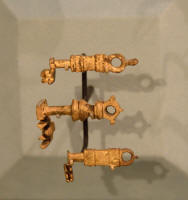 |
|
The London Mithraeum, also known as the Temple of
Mithras, Walbrook, is a Roman mithraeum that was discovered in Walbrook,
a street in the City of London, during a building's construction in
1954.
Mithras
The mysterious cult of Mithras first
appeared in Rome in the 1st century AD. It spread
across the Empire over the next 300 years,
predominantly attracting merchants, soldiers and
imperial administrators. Meeting in temples which
were often constructed below ground, these were
private, dark and windowless spaces. The
mythological scene of Mithras killing a bull within
a cave, the ‘tauroctony’ is at the heart of the
cult, and its full meaning is subject of much
speculation.
|
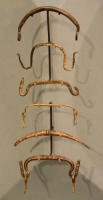 |
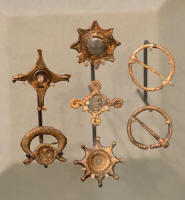
Artifacts from the dig |
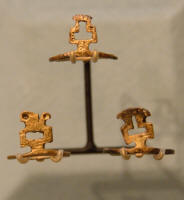 |
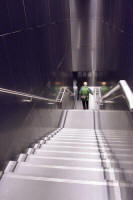
Down to the mithraeum |
THE LONDON
MITHRAEUM report of the tour by
Angela Bellwood
The discovery of the C300 AD Roman Temple of Mithras is one of the most
amazing archaeological stories from the City of London. Mithras was
originally the god of heavenly light who slayed a bull, from whose blood
flowed eternal life. [The marble of Mithras and the bull shown below is
in the Museum of London.] The cult of Mithras came to the Roman world
from Persia and the eastern Mediterranean and was organised as a secret
society for men only, with seven grades of attainment. Popular with the
army, Mithraism demanded honesty, purity and courage from its followers.
The modern story of the Mithraeum starts in 1952 with the first glimpse
of the temple in a narrow archaeological trench in the bombed-out
basement of a building on the banks of the Walbrook river. It was
excavated in 1954. The whole ground plan of the Temple had survived but
it was only on the last day of the planned excavation that the marble
head of Mithras was discovered and the dedication of the temple was
confirmed. Public interest led to a twoweek extension to the dig. More
sculptures were uncovered and are now in the Museum of London. After a
long debate about the future of the structure, the site owners, Legal &
General, solved the problem by offering to dismantle the temple, store
the stone and tile, and then reconstruct it somewhere else on the site,
where the public could see it.
The temple was eventually reconstructed and opened to the public in 1962
on a podium in front of the new Temple Court building and there it
remained for the next 50 years. It was said that the final result was
far from what it ought to have been.
In December 2011 work started on dismantling the reconstruction. A team
of masons from Nimbus Conservation worked through the winter carefully
cleaning and packing each of the 4,500 pieces recovered. It was
impossible to rebuild the temple exactly as it was found, but there is
one element that can be matched; the threshold for the eastern entrance
to the temple. Amazingly as the stones were cleaned and prepared for
lifting, the original Roman iron collars for the doorposts became
apparent. Not only have these survived 1,700 years in the ground, but
another 50 years of London’s rain.
I thought our visit was going to be a disaster when I arrived to find
the entrance door locked. So I knocked on the door and was told they
were closed, to which I replied that they couldn’t be because we had a
tour booked! It turned out that they had school parties visiting and we
shouldn’t have been able to book, so our little group ended up having a
private visit. (Apologies to my second tour party who just got the
ordinary tour.) Page 8
The Temple is 9 metres below ground at Roman ground level . It’s a
faithful recreation of the ruin discovered in 1952. All the stone and
most of the bricks are from the original structure, but the mortars and
renders on the walls and the timbers are new. And it was an impressive
sight. The lighting started out dark and gradually lightened to reveal
the Temple with a clear perspex screen at the end with a drawing of
Mithras killing the bull.
The Temple is rectangular with a central nave where it is thought the
rituals took place, with seating for a congregation of around 30,
separated from the nave by sleeper walls and seven columns. Unusually,
it had a rounded apse at one end that would have featured a statue of
Mithras on a raised platform. The stone head of Mithras found in 1954 is
likely to have been used in this statue, with the rest of the body and
the bull made from plaster.
The temple would have had no windows and would have been lit by lamps,
torches and braziers. Four small holes behind the statue plinth may have
carried torches, creating lighting effects (replicated now) while a
timber tank or simulated well held water used in rituals.
Upstairs there is a big glass case with artefacts discovered on the
site. More than 14,000 artefacts were recovered (including 405 wax
tablets), 63,000 sherds of Roman pottery and three tonnes of animal
bone, providing evidence of trade, food and industry.
|
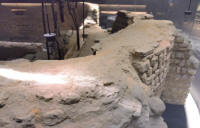 |
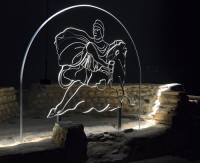
Mithras |
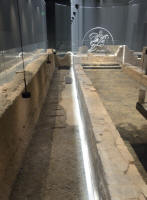 |

Final picture of the tapestry |
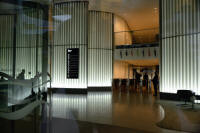
Interesting decor in this office |
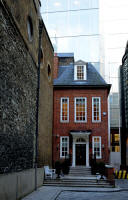
Incongruous little house |
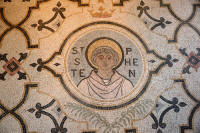
St Stephen's Church Walbrook
by Sir Christopher Wren |
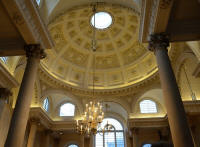 |
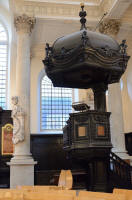 |
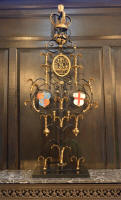 |
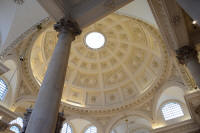
St Stephen's Church Walbrook |
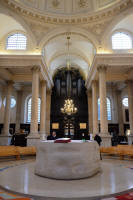 |
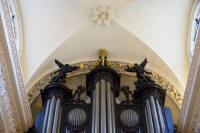
St Stephen's Organ |
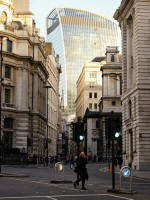
The Walkie Talkie- 20 Fenchurch Street |
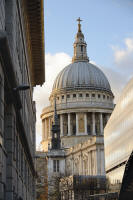
St Paul's |
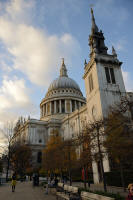 |
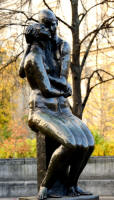
The "Young Lovers" by George Ehrlich. |
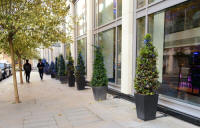
Blue lights |
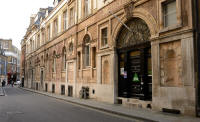 The YHA hostel on Carter Lane
was
St Pauls Choir School in Victorian
times
|
We retraced our steps to Blackfriars and caught a train home. |
